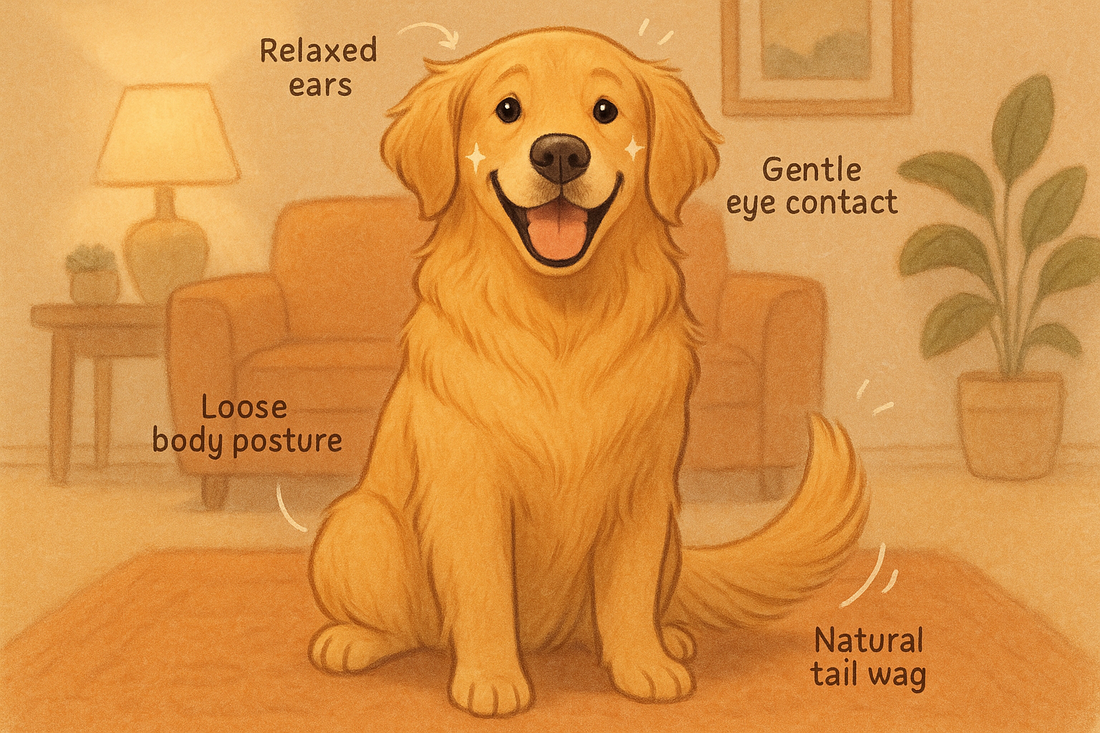
Signs of a Happy Dog: How to Recognize Joyful Pets
Share
9 Science-Backed Signs Your Dog Is Truly Happy
As loving pet owners, we all want the same thing — to know that our dogs are living happy, healthy lives. While dogs can’t speak, they communicate their emotions in other ways. Thanks to research in canine behavior, we now understand the signs that show a dog is content, secure, and thriving. Below are nine science-supported clues your pup is truly happy — and what you can do to keep that tail wagging.
1. Tail Wagging Patterns
A happy dog doesn’t just wag their tail — they do it with their whole body. Studies show that relaxed, wide, sweeping tail wags, especially when accompanied by a soft body and relaxed mouth, are reliable signs of joy. Wags that favor the right side of the body are often connected to positive emotions.
2. Ear Position
Ears that are perked up but relaxed suggest your dog is alert and happy. If your dog’s ears are pinned back or rigid, they might be stressed or uncomfortable. Each breed is different, so learn what’s normal for your dog.
3. Eye Contact
Gentle eye contact builds trust. A happy, secure dog will often hold soft eye contact with you, signaling connection and confidence. Be aware — direct stares between unfamiliar dogs can be seen as a threat, but eye contact with a trusted human is comforting.
4. Playfulness
Happy dogs love to play. Whether it’s chasing a ball, wrestling with a canine friend, or inviting you to tug, regular play behavior signals good mental health. Watch for the “play bow” — front legs down, tail up — it’s your dog’s way of saying, "Let’s have fun!"
5. Social Interaction
Well-socialized, happy dogs seek interaction. They approach new people with curiosity, enjoy affection from familiar faces, and get along well with other dogs. If your dog greets visitors or nudges you for pets, you’re doing something right.
6. Appetite and Digestive Health
Eating normally is a sign of both physical and emotional well-being. Happy dogs eat with enthusiasm and show interest in treats. A sudden change in appetite or digestive issues could mean stress or illness — always check with your vet if something seems off.
7. Sleep Patterns
Dogs sleep a lot — often 12 to 14 hours a day. A content dog will have regular, undisturbed sleep and usually pick spots near family members. Excessive restlessness or sudden sleep disturbances can be signs of anxiety or pain.
8. Vocalization
Happy dogs may bark, whine, or "talk" in excited tones. A joyful bark sounds different from a fearful one — it’s usually higher-pitched and short. Don’t confuse silence with contentment, though. Every dog is different. What matters is knowing what’s normal for your pup.
9. Relaxation and Calmness
Calmness is one of the best signs of happiness. Happy dogs relax in different settings, lie down in familiar spaces, and aren't constantly alert or anxious. If your dog sprawls out belly-up in the middle of the room — that’s trust at its finest.
Conclusion
Understanding your dog’s happiness is part of being a responsible and loving pet parent. These signs — backed by science — can help you recognize what’s working and where to make improvements. Every tail wag, soft gaze, or playful bark is a sign that your dog feels safe, loved, and happy. Keep observing, keep bonding, and keep giving your pup the life they deserve.